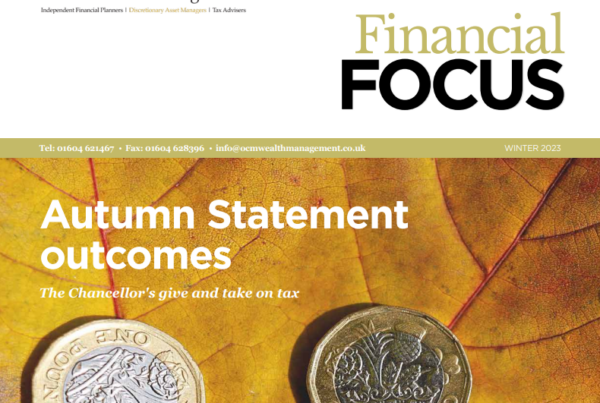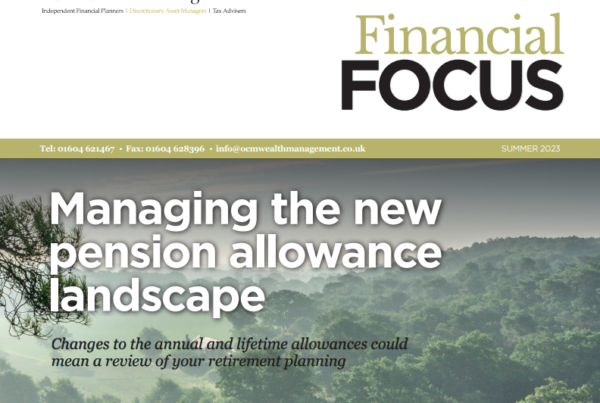Currency Movements and Investor Returns
So far this year, markets have rallied on the back of optimism and sentiment, while the economic data remains weak and risks to risk-on assets remain excessive. Over the period, as a result of uncertainty over key issues such as US-China trade wars and Brexit amongst a backdrop of lower global growth and weaker corporate earnings, markets have displayed excessive levels of volatility, however generally trended upwards, with the benchmarks now up between 5 and 6% since the beginning of the year. In comparison, owing to our defensive positioning, our portfolios remain relatively flat in a bid to reduce volatility and protect against downside risk. It is key to highlight that market rallies are typically experienced as we enter a bear market, however as the fragility of the rally becomes more visible and currency risk increases, it is clear that investors must choose asset class exposure carefully to navigate 2019 successfully.
We have highlighted in previous market commentaries just how fragile the current rally in markets is, with a distinct lack of economic reasoning behind soaring equity valuations as corporate outlooks worsen, however as we approach the Brexit deadline and tensions intensify, it is also important to highlight just how large an impact an appreciation of sterling would have on investment returns.
Brexit developments and sterling
With just eight days remaining before the Article 50 negotiation period, Brexit has once again been at the forefront of economic debate this week, as the UK appears to be no closer towards agreeing a deal for its exit from the European Union. The UK now faces the risk of an accidental no-deal drop out unless it can reach a last-minute deal and break the parliamentary impasse. As Theresa May’s requestfor a short extension to Brexit was met with opposition yesterday both from within parliament and from the EU, it now appears unlikely that the UK will be given an extension unless the withdrawal agreement passes through parliament beforehand.
Despite increased risks of a no-deal Brexit, it remains of low probability that the UK will have a disorderly exit, with either the existing deal and orderly Brexit, or a referendum and no-Brexit being the most probable options remaining on the table. For this reason, despite continued uncertainty, an appreciation in sterling is becoming increasingly likely.
The impact of sterling on investor returns
Up until recently, sterling has been relatively weak as a result of Brexit-related uncertainty, boosting the FTSE 100 index due to its high levels of international exposure. As these companies tend to gain a significant percentage of their revenues from overseas markets, they are typically more exposed to currency movements. A weaker sterling has the potential to magnify returns for investors with large exposure in foreign currency, which explains the fluctuation in money inflows into the FTSE 100 index in recent months. Conversely, an appreciation in sterling reduces corporate revenues, further squeezing corporate earnings.
As the expectation is that sterling will strengthen as a result of a positive Brexit outcome, a decline in the FTSE 100 is becoming increasingly likely. With approx. 71% of earnings from FTSE 100 companies coming from overseas sources, a significant appreciation in sterling would result in a large decline in the FTSE 100.
Strengthening sterling will also negatively impact UK investors with high non-sterling exposure via overseas equities and bonds, assets which derive their values and incomes from non-UK sources, with returns being impacted by unfavourable exchange rates. Despite the underlying performance of these assets, negative currency exposure has the ability to erode returns.
Expectations for sterling
UK investors (including the AFI benchmarks) are highly exposed to currency risk as we approach the Brexit deadline. Fluctuations in sterling will become increasingly important over the coming weeks as Brexit negotiations unfold. Currency markets are expected to demonstrate a significant degree of volatility over the next week, and a positive Brexit outcome would most likely see the sterling rallying between 1.40 and 1.50 against the US Dollar.
The length of the potential extension also plays an important part in determining the volatility faced in the currency. As it stands, the implied volatility of the pound has fallen as we approach March 29th, as investor sentiment and market positioning have factored in risks of a fall in Sterling, as investors are looking for clarity before adding exposure. In contrast, asset managers have been adding to long positions in the cable rate (GBP/USD) whilst hedge funds are buying call options to benefit from a possible rally against the Euro.
Investor sentiment clearly illustrates how volatility in foreign currency will be prominent in the coming weeks. In the broader market, UK investors with portfolios with significant non-sterling holdings and FTSE 100 exposure will be exposed to huge variations in returns, with portfolio returns reducing by an expected 4% if sterling increases to 1.40, or 7% if the rate increases to 1.50. Most UK investors typically have a large exposure to foreign currency in their portfolios, meaning that although they may have experienced the gains the equity market in the first quarter of 2019, they may face erosion of returns amid sterling fluctuations and exchange-rate risk.
The benchmarks are also highly exposed due to overseas equity and bond exposure, therefore an adverse movement in sterling could erode all gain in the benchmarks made so far in 2019 overnight.
The sterling has seen a movement towards a high of 1.33 recently, indicating a strengthening pound and the market is set to continue this ‘bull’ path at least for the short-term. The source of move is diminishing pessimism around a hard Brexit. The currency has gained each day of the week, with the rally in sterling becoming more realistic.
Overall
It is clear that currency risk is increasing for UK investors in the lead up to Brexit, with a need to choose exposure carefully to prevent the erosion of the gains made so far in Q1 2019. It is our view that if we see an appreciation in sterling, returns will be eroded from the AFI benchmarks, resulting in a sharp decline in returns over a short period of time. Where most UK investors are highly exposed to this risk, our portfolios have been designed to minimise currency risk via the use of predominantly sterling denominated assets and low FTSE 100 exposure in preparation for further volatility. This provides our clients with stability against currency headwinds and adds an extra layer of protection for assets.
The information contained in this document is provided for information purposes only. It does not constitute a research recommendation or investment advice and must not be treated as a recommendation or an offer or solicitation for investment. Investors should form their own view in relation to the above mentioned investment. Past performance is not a reliable indicator of future results and forecasts are not a reliable indicator of future performance.



